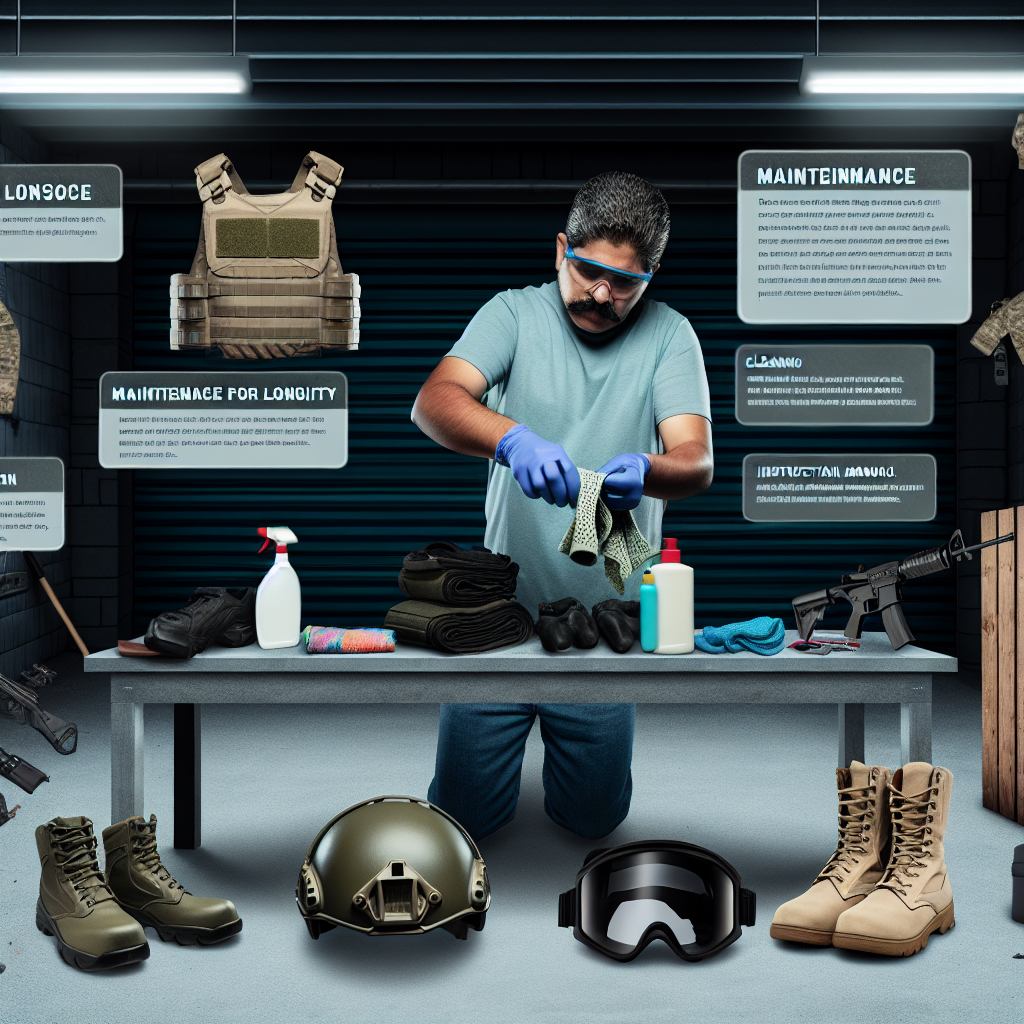How to Maintain Your Tactical Gear for Longevity

Tactical gear is an essential investment for military personnel, law enforcement officers, outdoor enthusiasts, and survivalists alike. Designed to withstand harsh environments and rigorous use, this equipment includes everything from tactical vests and backpacks to boots and firearms accessories. However, even the sturdiest gear can degrade over time without proper maintenance. Ensuring your tactical gear remains functional and reliable requires consistent care and attention. In this comprehensive guide, we will explore effective strategies to maintain your tactical gear for longevity, supported by practical examples and expert insights.
Understanding the Importance of Proper Maintenance
Tactical gear serves as a lifeline in critical situations. According to a 2020 survey conducted by the National Tactical Officers Association (NTOA), 68% of officers reported that equipment failure in the field had negatively impacted their performance at least once in their career. This statistic underscores why maintaining your gear is not merely about preserving value but also about ensuring safety and operational effectiveness.
Proper maintenance extends the lifespan of your equipment, reduces replacement costs, and guarantees that every piece performs as expected when you need it most. Neglecting maintenance can lead to compromised durability, diminished comfort, and even hazardous failures during missions or training exercises.
Regular Cleaning: The Foundation of Gear Longevity
One of the simplest yet most crucial steps in maintaining tactical gear is regular cleaning. Dirt, sweat, dust, mud, and other environmental contaminants can degrade materials over time. Each type of tactical gear requires specific cleaning methods tailored to its material composition.
- Textile Gear (Vests, Backpacks, Pouches): Use mild detergents and lukewarm water to clean nylon or polyester fabrics. Avoid bleach or harsh chemicals as they weaken fibers.
- Boots: Remove mud and dirt with a soft brush after each use. Condition leather boots with appropriate leather conditioners to prevent cracking.
- Metal Components (Buckles, Zippers): Wipe down with a dry cloth; apply light lubricants like silicone spray on zippers to ensure smooth operation.
- Firearms Accessories: Clean according to manufacturer guidelines using solvent and oil designed for firearms to prevent corrosion and ensure reliability.
A case study from the U.S. Army’s Combat Uniform Maintenance Program found that soldiers who cleaned their gear weekly experienced a 30% reduction in wear-related damage compared to those who cleaned less frequently.
Inspection Routines: Detecting Issues Before They Escalate
Preventive inspection is key to identifying potential problems before they become serious failures. A thorough examination allows you to spot wear points such as frayed stitching, broken buckles, or compromised straps early on.
- Visual Checks: Inspect all seams for loose threads or tears; check Velcro closures for debris buildup that reduces grip strength.
- Functional Tests: Test buckles, zippers, hydration system valves, and MOLLE webbing attachments regularly to ensure they operate smoothly.
- Fit Assessment: Verify that adjustable components still allow proper fit; worn elasticity or damaged adjustment points can affect comfort and functionality.
The International Association of Fire Fighters (IAFF) recommends monthly inspections for firefighting tactical gear due to the high-stress environment in which it is used—highlighting how frequent inspections can improve safety outcomes across various tactical professions.
Storage Best Practices: Protecting Your Gear When Not in Use
The way you store your tactical gear significantly influences its lifespan. Improper storage can lead to mold growth, material degradation, or mechanical damage. Follow these guidelines to keep your equipment safe between uses:
- Dry Environment: Store gear in a cool, dry place away from direct sunlight or excessive humidity which can cause mildew or UV damage.
- Avoid Compression: Don’t crush backpacks or vests under heavy objects as this can deform padding or warp structural components.
- Use Protective Covers: Utilize dust covers or breathable bags for textiles; store boots on racks rather than floors to maintain shape.
- Separate Firearms Components: Store firearm parts separately with appropriate oiling and desiccant packs to prevent rust formation.
A study by the Outdoor Industry Association revealed that tactical backpacks stored improperly exhibited a 25% higher rate of fabric degradation over two years compared with those stored under recommended conditions.
Lubrication and Repair: Extending Functionality Through Timely Intervention
Tactical gear often includes moving parts such as zippers, buckles, hinges on weapon accessories, or hydration bladder valves that require lubrication for optimal function. Neglecting these components can lead to jams or breakage during critical moments.
- Zippers: Apply silicone-based lubricants sparingly on zipper teeth if they become stiff or difficult to move—avoid oils that attract dirt.
- Buckles & Clips: Lubricate pivot points lightly; replace any cracked or weakened plastic parts immediately since these are common failure points under stress.
- Sewing Repairs: Small tears should be sewn promptly using heavy-duty thread designed for nylon; consider professional repair services for extensive damage






